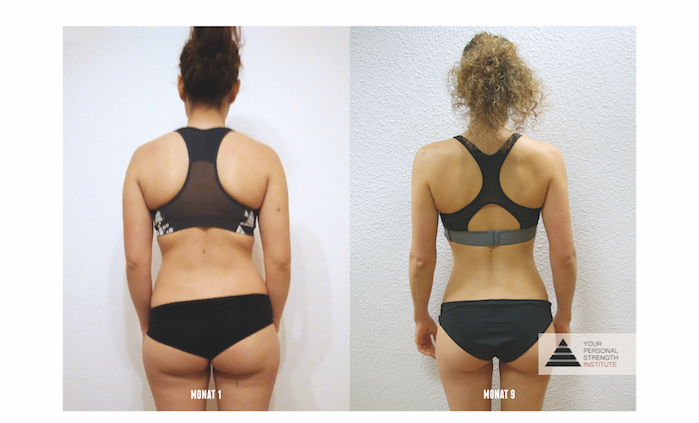The gluteus maximus muscle, referred to simply as the gluteus (there are several gluteal muscles) in the title and later in this article, is the largest muscle in the human body in terms of volume and the largest muscle in the hip. It shapes our buttocks, which is why its optimal development from a purely visual perspective is sought by both women and men - key word firm buttocks. In bodybuilders or athletes with severely hypertrophied glutes, you can even see them in the front view.
The gluteus arises primarily from the iliac crest and the posterior aspect of the sacrum and coccyx, from where its muscle fibers slope downward to a common tendon of attachment that both radiates into the iliotibial band and inserts at the posterior aspect of the thigh.
Tasks in everyday life and in sports
The gluteus fulfills several functions in the hip joint. On the one hand, it allows us to stand upright with a fixed thigh and in the standing leg phase of walking it prevents the pelvis from tilting forward. Furthermore, the gluteus stretches the thigh back and also stabilizes it in extension, which enables us to stand up, walk, run and sprint.
Depending on which part is fixed, the gluteus can therefore perform an extension in the hips and thus straighten the upper body or perform an extension in the thighs and thus stretch the thighs backwards.
The gluteus participates in thigh adduction with some of its muscle fibers and in thigh abduction with other muscle fibers, assisting the small gluteal muscles (gluteus medius and gluteus minimus). It is also involved in the external rotation of the thigh.
Together with the muscles erector spinae gluteus, hamstrings, gastrocnemius/soleus, the gluteus forms the so-called posterior chain. The training of the posterior chain has a decisive influence on the success of athletes in sprinting and jumping sports, because the involvement of the posterior chain in jumping power and sprint speed is about 80%. The glutes alone make up 40% of that - showing just how important their strength is to just about every athlete. For comparison: the quadriceps are only 5% involved in jumping and sprint speed.
Training the glutes
There are special machines for extending the leg backwards, ankle cuffs for cable pulleys, you can walk while squatting with rubber bands - all of these lead to a glute burn and possibly even soreness, but it doesn't make it strong and it isn't functional in terms of athletic performance.
By far the best exercise for functional strengthening and glute development is the Olympic flat heel squat. Other hip extension exercises, such as variants of squats or deadlifts, good mornings, back extensions or split squats, are also useful and must be integrated into the training program depending on the athlete, status and goal. The recently popular hip thrusts don't find a place in my programs because I'm not a fan of hip thrusts for these reasons.
However, the squat remains the basis, as it not only trains the glutes, but the entire lower body with a relatively high weight over the largest range of motion in a functional movement, balancing and mobilizing at the same time (in the lowest position). Training the glutes in isolation makes for Athletes who want to achieve better performance make no sense. Flat-heel squats are an excellent solution for increasing recruitment and maximum strength as well as posterior chain power, which directly correlates to high jump and short-term sprint speed. If you want to be a faster and better athlete - train your glutes with hip-extension compound exercises.
Doing sprints, for example as part of interval training, is also a very good way to functionally train the glutes. The explosive contraction and the high forces that act when sprinting are decisive here. The optical development of the gluteus in sprinters suggests that this type of training should be preferred to steady-state endurance training, also for aesthetic reasons. For more info on this, read this article "Why Classic Cardio for Fat Loss is a Waste of Time " .
You can also find more about squats here in the YPSI Handbook – Improve your Squat
Additional stretching exercises such as the 90/90 stretch or Ido Portal's 30/30 squat challenge are also a good addition to strength training, since the glutes of many trainers are tight and inactive due to too much sedentary activity.
Conclusion: The gluteus is one of our largest, most important and aesthetically most noticed muscles. Make sure you don't neglect it in your training either.
Good luck with your glute training!
Image: Jessica's Before'n'After Transformation.

